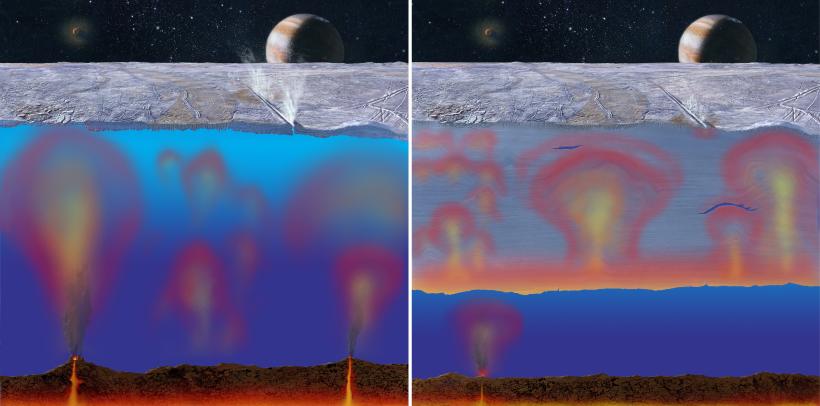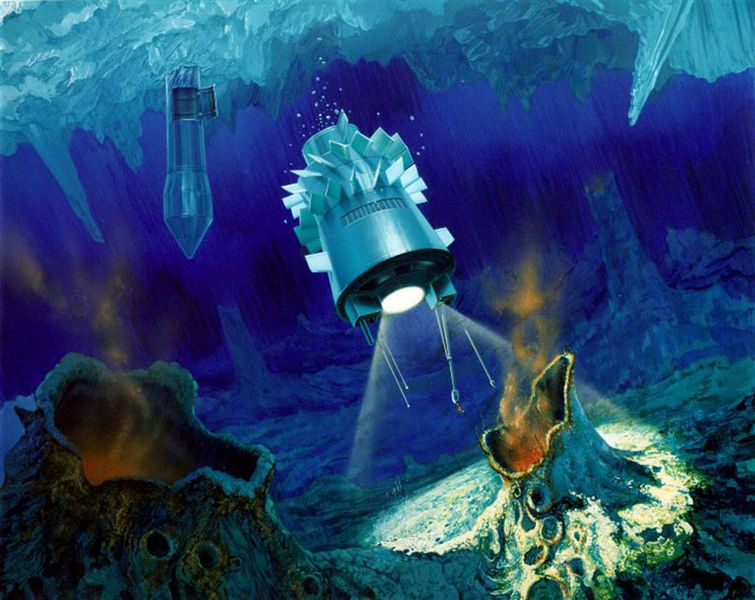Life,
as far as we know, needs three
ingredients:
1. Liquid water
2. Certain chemical elements
3. An energy source
Europa may have them all!
The subsurface ocean can provide the
liquid water needed to harbor life.
Europa's surface is in a high radiation
environment. The interaction between this
radiation and Europa's icy shell creates
molecules like free oxygen, carbon
dioxide, sulfur dioxide and other
essential compounds. Convecting currents
between the surface and the ocean can
bring these molecules into the ocean.
Other essential minerals might be found on
the seafloor.

Heat convection modules of
Europa - NASA
Two modules of Europa's ocean and
ice shell: a thin ice shell with a
thick ocean or a thick ice shell with
a thin ocean. The thicker ocean
applies more heat is produced, and has
a higher likelihood of sustaining
life.
|

Europa ocean explorer concept - NASA
Europa might have hydrothermal vents similar
to the ones deep in Earth's oceans.
Bacteria may be able to harvest the energy
from these vents similar to ones found on
Earth.
Energy is least certain
factor. On Earth, most life harvests
energy from the Sun (directly or
indirectly), though this is not possible
in Europa. Jupiter's tidal
forces provide a large amount of energy,
that may create volcanoes or hydrothermal
vents on the ocean floor. Simple bacteria
can harvest the energy from these vents,
similar to hydrothermal vents here on
Earth.
Though the possibility of life on Europa
is real, a lot of information is still
unknown. Further
exploration of this moon is needed
to understand it more thoroughly, and to
find out if it really supports life.
|